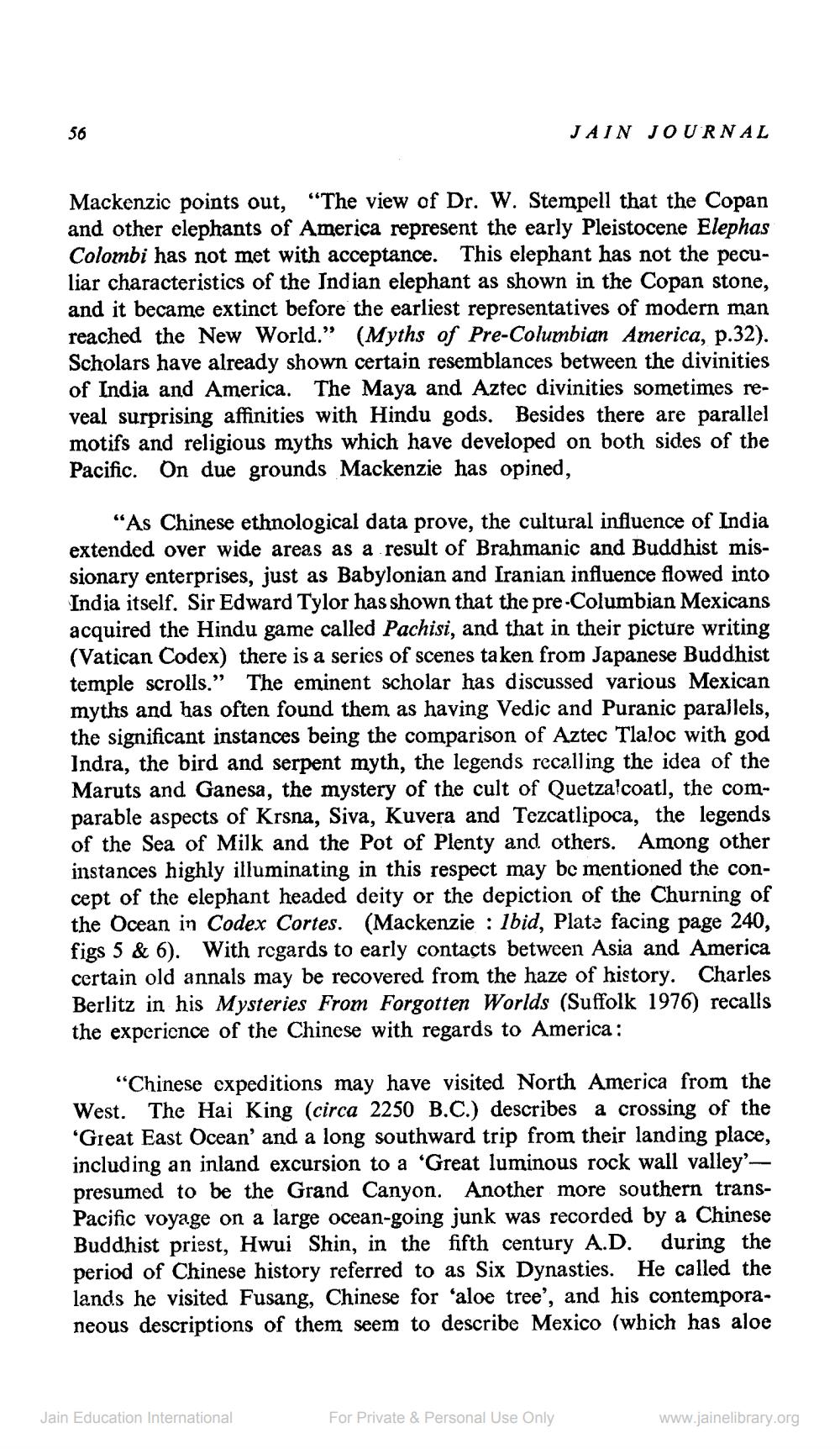________________
JAIN JOURNAL
Mackenzic points out, “The view of Dr. W. Stempell that the Copan and other elephants of America represent the early Pleistocene Elephas Colombi has not met with acceptance. This elephant has not the peculiar characteristics of the Indian elephant as shown in the Copan stone, and it became extinct before the earliest representatives of modern man reached the New World.” (Myths of Pre-Columbian America, p.32). Scholars have already shown certain resemblances between the divinities of India and America. The Maya and Aztec divinities sometimes reveal surprising affinities with Hindu gods. Besides there are parallel motifs and religious myths which have developed on both sides of the Pacific. On due grounds Mackenzie has opined,
"As Chinese ethnological data prove, the cultural influence of India extended over wide areas as a result of Brahmanic and Buddhist missionary enterprises, just as Babylonian and Iranian influence flowed into India itself. Sir Edward Tylor has shown that the pre-Columbian Mexicans acquired the Hindu game called Pachisi, and that in their picture writing (Vatican Codex) there is a series of scenes taken from Japanese Buddhist temple scrolls.” The eminent scholar has discussed various Mexican myths and has often found them as having Vedic and Puranic parallels, the significant instances being the comparison of Aztec Tlaloc with god Indra, the bird and serpent myth, the legends recalling the idea of the Maruts and Ganesa, the mystery of the cult of Quetzalcoatl, the comparable aspects of Krsna, Siva, Kuvera and Tezcatlipoca, the legends of the Sea of Milk and the Pot of Plenty and others. Among other instances highly illuminating in this respect may be mentioned the concept of the elephant headed deity or the depiction of the Churning of the Ocean in Codex Cortes. (Mackenzie : lbid, Plate facing page 240, figs 5 & 6). With regards to early contacts between Asia and America certain old annals may be recovered from the haze of history. Charles Berlitz in his Mysteries From Forgotten Worlds (Suffolk 1976) recalls the experience of the Chinese with regards to America:
"Chinese expeditions may have visited North America from the West. The Hai King (circa 2250 B.C.) describes a crossing of the 'Great East Ocean' and a long southward trip from their landing place, including an inland excursion to a 'Great luminous rock wall valleypresumed to be the Grand Canyon. Another more southern transPacific voyage on a large ocean-going junk was recorded by a Chinese Buddhist priest, Hwui Shin, in the fifth century A.D. during the period of Chinese history referred to as Six Dynasties. He called the lands he visited Fusang, Chinese for ‘aloe tree', and his contempora. neous descriptions of them seem to describe Mexico (which has aloe
Jain Education International
For Private & Personal Use Only
www.jainelibrary.org




